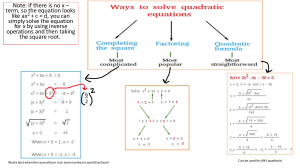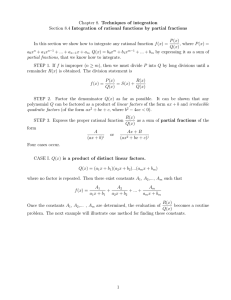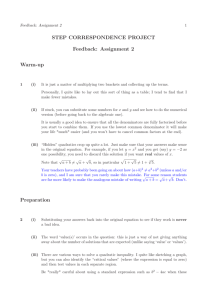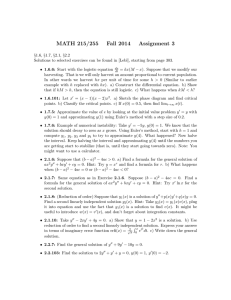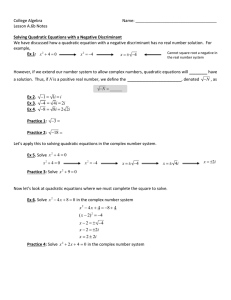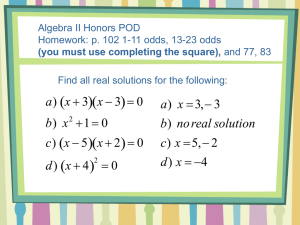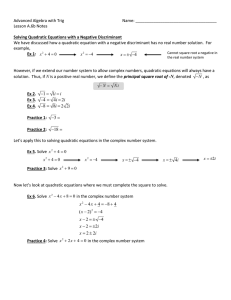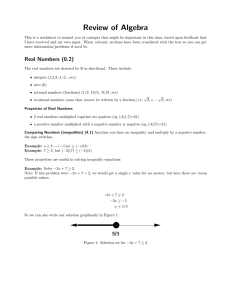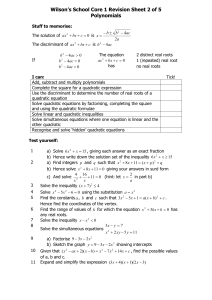1 Basics
advertisement
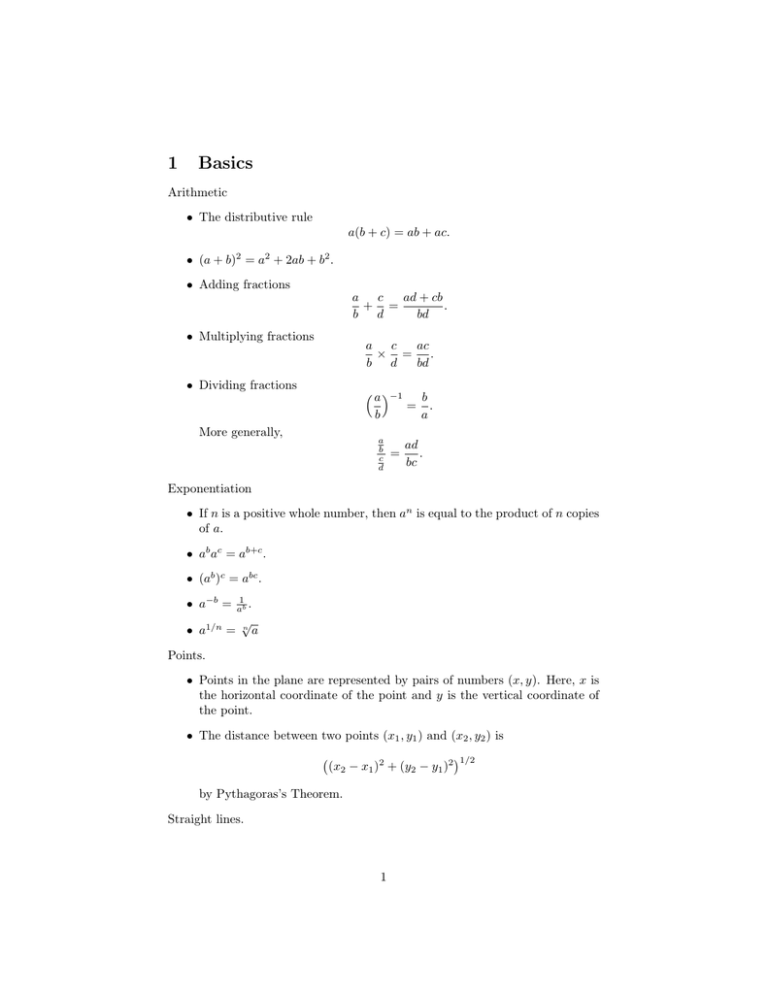
1 Basics Arithmetic • The distributive rule a(b + c) = ab + ac. • (a + b)2 = a2 + 2ab + b2 . • Adding fractions a c ad + cb + = . b d bd • Multiplying fractions a c ac × = . b d bd • Dividing fractions a −1 b More generally, a b c d = = b . a ad . bc Exponentiation • If n is a positive whole number, then an is equal to the product of n copies of a. • ab ac = ab+c . • (ab )c = abc . • a−b = • a1/n = 1 . ab √ n a Points. • Points in the plane are represented by pairs of numbers (x, y). Here, x is the horizontal coordinate of the point and y is the vertical coordinate of the point. • The distance between two points (x1 , y1 ) and (x2 , y2 ) is (x2 − x1 )2 + (y2 − y1 )2 by Pythagoras’s Theorem. Straight lines. 1 1/2 • Slope-intersect form: y = mx + b. m is the slope, b is the y-intercept. • Point-slope form: y − y0 = m(x − x0 ). m is the slope, (x0 , y0 ) is a point that the line goes through. • The slope of the line between the points (x1 , y1 ) and (x2 , y2 ) is y2 − y1 . x2 − x1 • Horizontal lines: y = b. Vertical lines: x = c. • Parallel lines have the same slope. • The slopes of perpendicular lines multiply to −1: If the lines y = m1 x + b1 and y = m2 x + b2 are orthogonal, then m1 m2 = −1. Quadratic Equations • A quadratic equation is an equation of the form ax2 + bx + c = 0 where x is a variable and a, b and c are constants. • We can solve either by – Factoring: if we can write ax2 + bx + c = (x − d)(x − e) for some numbers e and d, then the solutions of the equation are x = d and x = e. – The quadratic formula: 1/2 −b ± b2 − 4ac x= . 2a The equation has two solutions if b2 − 4ac is positive, one solution if b2 − 4ac is zero, and no solutions if b2 − 4ac is negative. Parabolas and circles. • y = ax2 + bx + c is the equation of a parabola if a 6= 0 (if a = 0 it is the equation of a line). 2 • The equation of a circle with centre (a, b) and radius r is (x − a)2 + (y − b)2 = r2 . Which is the same as saying distance between (x, y) and (a, b) = r. 2 Functions The domain of a function is the collection of possible inputs to the function, the range of a function is the collection of possible outputs of the function. Some functions you should be familiar with. • The absolute value function is defined by x if x ≥ 0 |x| = −x if x < 0. Its graph looks like this. • 3 Limits 3
